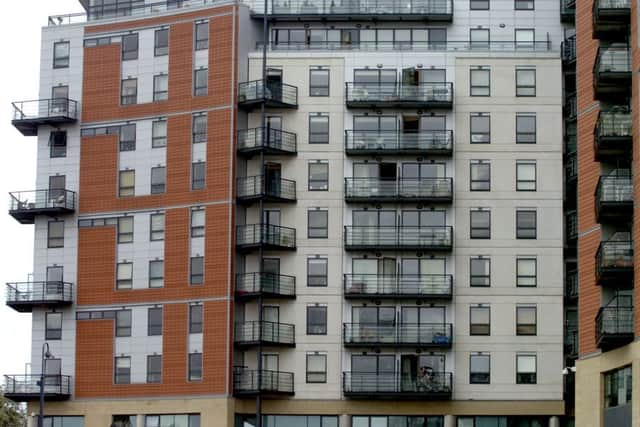Why more young people are opting for city living


Living in the rural Skelmanthorpe area of Huddersfield, the rush-hour commute to her job in Leeds could sometimes take an hour by car.
Today, however, she is one of a growing number of young people who are choosing to live in Leeds city centre.
Advertisement
Hide AdAdvertisement
Hide AdNew figures have revealed that the population in the heart of the city more than doubled between 2001 and 2011, despite the numbing effect of the credit crunch on Leeds’s flats construction drive.


The number of people aged 20 to 29 living in the city centre nearly trebled during the same period. That age group is now estimated to account for around half of Leeds city centre’s residents.
The figures are likely to increase concerns about the impact that the trend for urban living could have on rural communities.
But, for Ms Dixon, the five-minute walk to her job at the Stickyeyes digital marketing agency on Wellington Street outweighs any occasional yearning for the relaxing joys of countryside life.
Advertisement
Hide AdAdvertisement
Hide AdThe 24-year-old, who lives with boyfriend Matt Shields in a £700-a-month rented fourth-floor apartment in Leeds’s City Island development, told The Yorkshire Post: “There are times when I do miss the green space you get in the countryside but overall the pluses here definitely outweigh the minuses.
“City Island is great because it’s city centre living and all the shops and bars that come with that, but at the same time, it’s not in the very centre of town so you don’t have to put up with the busy nightlife literally on your doorstep.”
The new figures are contained in a report put together by the respected Centre for Cities think tank.
They show that Leeds city centre’s population rose from 12,265 in 2001 to 26,020 a decade later.
Advertisement
Hide AdAdvertisement
Hide AdThe number of 20-to-29-year-olds, meanwhile, soared from 4,756 to 13,187 – an eye-watering increase of 177 per cent.
In Sheffield, the city centre population went from 16,264 to 34,298 between 2001 and 2011.
More than 16,500 of Sheffield city centre’s residents in 2011 were aged between 20 and 29.
City dwellers are more likely to be well-educated single professionals or students, according to the Centre for Cities report.
Advertisement
Hide AdAdvertisement
Hide AdAcross England and Wales, the population of large city centres more than doubled in the 10 years to 2011.
Centre for Cities chief executive Alexandra Jones said the figures had major implications for the country’s policy-makers.
She went on: “There’s been a lot of debate in recent years about the future of our high streets, but this report shows we need to look at city centres as places where people increasingly want to live and work, as well as being somewhere to shop.
“That has serious implications for any decisions about where to build houses, develop transport links and base public services and amenities.
Advertisement
Hide AdAdvertisement
Hide Ad“Policy-makers can’t take this resurgence for granted – it needs to be supported and sustained. For example, building more houses in city centres will help deal with issues like over-crowding and rising house prices, which could put potential residents off if left unaddressed.”
Richmondshire District Council last year launched a campaign to provide more affordable housing and job opportunities across large parts of the Yorkshire Dales in an attempt to slow the exodus of young people from the countryside to towns and cities.
Jonathan Morgan, from Leeds-based property sales and rental business Morgans, said the figures highlighted how people had bought into the new way of life on offer to city centre residents.
He told The Yorkshire Post: “These people want to live in town, 50 per cent of them don’t have a car and they want to walk to work. They also want to socialise every night, not just on a Friday and Saturday.
Advertisement
Hide AdAdvertisement
Hide Ad“It’s very different from the traditional British idea of a three-bedroomed semi in a suburb with a nice back garden, a car out front and a drive to and from work.
“If you look at countries around the world, successful people have always been attracted to city centres and that’s what we are seeing.”